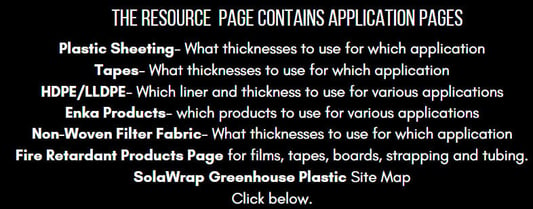10 mil vs 20 mil...Decisions- Decisions: How to Select A Crawl Space Liner


How do you decide between a 10 mil versus a 20 mil crawl space vapor barrier? It's kind of like choosing between a lightweight sweater and a thick wool sweater. What are the conditions that surround the situation? Below is a very simplified look at some of the considerations when deciding on a crawl space liner. If you are unsure, speak to someone who is well versed in these liners and can explain the differences to you. (760.597.9298)
10 Answers You Will Need To Know to Help Select the Best Liner for your crawl space:
-
Crawl Space Dimensions: What are the dimensions (length, width, height) of your crawl space?
-
Access Points: How easy is it to access the crawl space? Are there any obstructions or challenges for installation?
-
Moisture Issues: Have you experienced any moisture or water-related problems in the crawl space, such as leaks or flooding?
-
Ventilation: Is the crawl space adequately ventilated, or are there issues with humidity and condensation?
-
Insulation: Is there existing insulation in the crawl space? If so, what type and condition is it in?
-
Pest Concerns: Have you encountered any pest or rodent infestations in the crawl space?
-
Foundation Type: What is the foundation material (e.g., concrete, block, pier, beam) in your crawl space?
-
Current Liner or Cover: Do you have an existing crawl space liner or cover in place, and if so, what is its condition?
-
Future Use: Do you have any plans to use the crawl space for storage or other purposes?
-
Budget: What is your budget for a crawl space liner installation?
Things to Consider:
- If you have a rocky crawlspace in which you will be storing things and walking around, thicker is the smartest way to go. The thing about a crawl space is that you don't want to get it wrong the first time. You don't want to be sitting in your home after the job is completed and smell that awful musty smell that you had before the crawl space liner/ vapor barrier was installed.
- Whether you do the job yourself, or hire someone to do it, its a job that you only want to do once. Select the strongest, most tear resistant crawl space liner you can, and sleep well at night.
- A 20 mil string reinforced liner that passes the essential tests is your go to liner in many cases. Part of the assessment revolves around how you will handle radon. There are liners that block radon.
Tests for Crawl Space Vapor Barriers
- Water Vapor Transmission Rate (WVTR) test ASTM E 96 measures the water vapor transmission rate, or the rate at which water passes through the plastic sheeting vapor barrier.
- Elongation, Tongue Tear, Trapezoidal Tear and Load Yield are other tests that can tell you how strong the liner is under pressure. Be sure to ask your installer, or plastic sheeting supplier for this information so you can make an educated decision about which crawl space liner you want to use.
What should you know about crawl space liners?
The Crawl Space Material
The material used for crawl space liners is of utmost importance when looking at how well the vapor barrier will function. Make sure to select a liner made from high-grade raw materials, such as virgin polyethylene, as opposed to "construction grade films" or C & A films. These plastic sheeting products are made from low-grade resins and post-consumer recycled materials, which will not provide the necessary protection from moisture and gases. While commodity films have their purposes in agriculture and construction sites, they are not suitable for crawl spaces.
The Life-Span of the Vapor Barrier
With the goal of one and done- One crawl space vapor barrier and never again have to do this job, the crawl space liners that are made from sub-par plastic or C & A poly AKA Visqueen will decay. The life span of a strong crawl space vapor retarder will resist decay and the attacks from moisture, organisms in the soil and chemicals. Weaker films will come apart and degrade over time.
Questions to Ask a Crawlspace Installer (and you should know the answers)
- What percentage is recycled material?
- Is it better to use 100% Virgin polyethylene?
- I would like to use reinforced virgin polyethylene, may I provide the plastic to install?
- How will you install, tape and mechanical fasteners on the walls?
- What is the Water Vapor Transmission rate on your plastic?
- What class is it?
The Issues in a Dirt Floor Crawl Space
- Wet and smelly area
- Allergenic mold spores and Mildew that contributes to rot and health issues
- Rats/ mice, termites, cockroaches, ants, and crickets may party the night away in a dark wet crawl space
- Radon coming up from the earth
The best bet is to do your homework so you can decide if a lighter 10 mil crawl space liner will do the job, or something heavier such as a 20 mil liner. Knowing that there are certificates/ spec sheets that spell out how the liner is rated will insure you are getting what you are looking for.
If you need further assistance, we hope you will call us at 760.597.9298.
Here's to your beautiful clean crawl space!
Become A Crawl Space Expert...Read these:
-
The Comprehensive Guide to Crawl Space Vapor Barriers
-
How Moist Crawl Spaces Affect Your Home's Air Quality
- Unveiling the Mystery: Crawl Space Encapsulation vs. Crawl Space Lining
- Understanding Crawl Space Liner Thickness and ASTM E 1745 Compliance
-
Signs Your Crawl Space Needs Lining and Why It's Essential
-
Choosing the Right Permeance for Your Crawl Space Liner: A Homeowner's Guide






